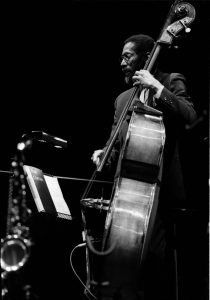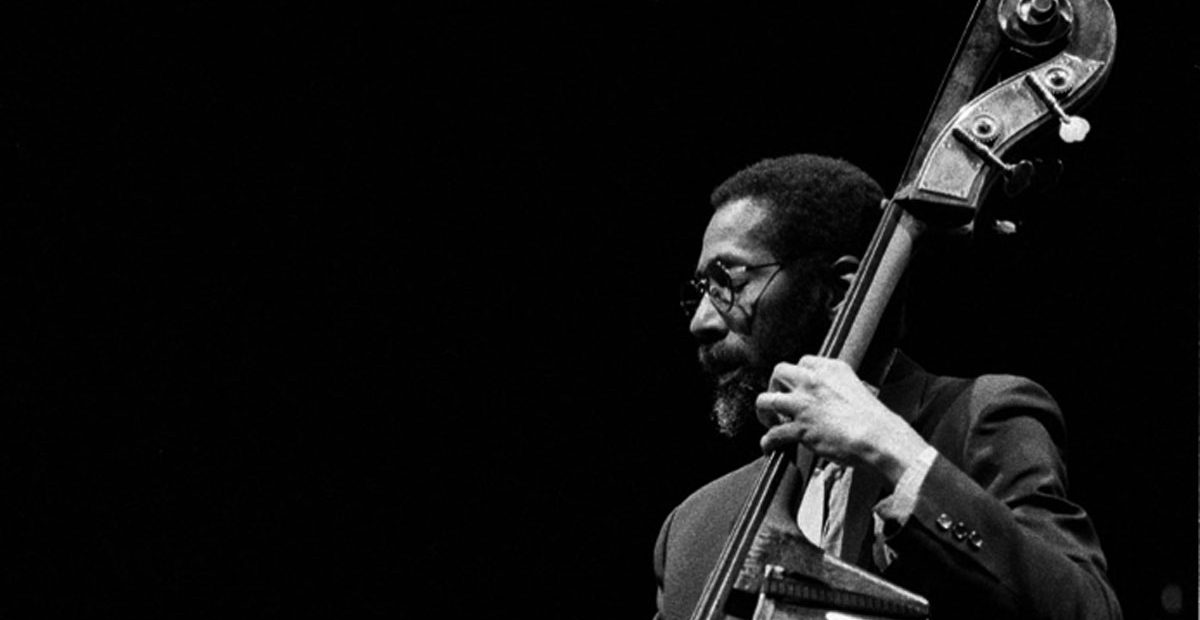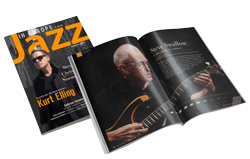Contra-bassist Ron Carter is best known for his years with Miles Davis throughout the 1960s, when Miles put together his “second great quintet,” which included Wayne Shorter on saxophone, Herbie Hancock on piano, and Tony Williams on drums. Simply with that affiliation, he is jazz royalty.
But he has noteworthy accomplishments before, during and after that brief period, which should not be overlooked. Carter is now 86 years-old, but still active, and he has never taken a break. Last year, he cancelled his European “Farewell” tour due to illness, so this could be one of the last times to see such a jazz legend on stage. Ron Carter and the Foursight Quartet play European shows in November 2023.
 Ron Carter (born in May, 1937 in Michigan) joined the Miles Davis group in 1963, and in 1964 he also joined the Charles Lloyd Quartet (with Hancock, Williams and alto saxophonist “Cannonball” Adderley) so as well recording two seminal albums with Lloyd, all of which on Columbia Records.
Ron Carter (born in May, 1937 in Michigan) joined the Miles Davis group in 1963, and in 1964 he also joined the Charles Lloyd Quartet (with Hancock, Williams and alto saxophonist “Cannonball” Adderley) so as well recording two seminal albums with Lloyd, all of which on Columbia Records.
Carter had first come onto the scene in 1961 with his first album as a leader with little-known players (at that time) Eric Dolphy, Mal Waldron, George Duvivier, and Charles Persip. Recorded at the famous Rudy Van Gelder’s studio, “Where?” came out on New Jazz Records, as it was a “new jazz” for the times, especially as Dolphy would soon become legendary as a trail-blazer of free jazz by the mid-60s.
Meanwhile, Carter by this time had joined up with Miles. Miles’ classic recording E.S.P. (1965) is the first studio recording with Carter, Hancock and Williams, and this one has three of Carter’s compositions, including the hardest-driving song on the album, “R.J.” named for Carter’s recently-born son. While the last track on the album “Mood” (written by Carter) seems to be suspended in motion. It is the only song that has that slow-moving signature of Miles’ 1959 masterpiece “Kind of Blue,” which eschewed the popular swing and hard-driving bop styles of the times for an ethereal, modal approach, which went on to influence not only jazz, but popular and even classical music. “Kind of Blue” is one of the best-selling recordings of all-time, so Miles could have toured with this “sound” for decades.
But instead, he created his second great quintet simultaneously profoundly disturbing his newer fans of “Kind of Blue” because it was yet another “new jazz” in a hyper-speed by the standards of the times. As all young players (except for Miles), Carter, Shorter, Hancock, and Williams were a fresh breeze and much of the time a flurry on their instruments, whether playing standards, ballads, or songs from “Kind of Blue.” Their complex compositions and improvisation were essential to their new direction.
Their other notable (considered by later Miles fans even immortal) albums all recorded for Columbia include “Miles Smiles” (1966), “Sorcerer” (1967), “Nefertiti” (1967), and “Miles in the Sky” (1968).
Throughout this same period, Hancock and Shorter began recording their first albums as leaders (on Blue Note) and these are among the greatest albums in jazz. Carter plays on Wayne Shorter’s “Speak No Evil” (1964), considered a classic of post-bop, and for some it is Shorter’s greatest recording ever. Carter is also on Shorter’s “The All-Seeing Eye” (1965), and the frenzied “Schizophrenia” (1967).
Miles replaced Carter with the English bassist Dave Holland in 1968; however, as in transition, both bassists contributed to “Filles de Kilimanjaro,” (with Carter on electric bass and Holland on acoustic bass) and then after this, Miles Davis’ “second-great-quintet” was abandoned. In the same year, 1968, Carter’s playing on Herbie Hancock’s album “Speak Like a Child” is among his deepest ever.
After recording some of the best jazz albums of all times (in the 1960s), Carter went on to record numerous solo efforts, and he has led his own groups as trios or quartets till the present. Active for over 60 years, he is the bassist who has the most recordings in the history of jazz (over 3,000 according to some sources), but officially in 2015, the figure was 2,221 according to the Guinness Book of Records.
Just one most surprising to note in Carter’s recent recordings are for “Twin Peaks – Fire Walk With Me” soundtrack playing double-bass on compositions by Angelo Badalamenti – that sultry, smoky jazz.
For his upcoming European tour, Ron Carter will be with his Foursight Quartet featuring Renee Rosnes (piano), Jimmy Greene (tenor sax), and Payton Crossley (drums). Crossley played on “Dear Miles,” a tribute album to Miles Davis recorded by Ron Carter in 2006. Payton Crossely with Renee Rosnes and Jimmy Greene also recorded a live album with Ron Carter on “Foursight – Stockholm Vol 1.” in 2019.
Ron Carter and the Foursight Quartet play shows across Europe (see below) in November 2023.
November 3 (Friday)—Prague Sounds Festival, Prague, Czech Republic
November 5 (Sunday)—Cosmopolite Scene, Oslo, Norway
November 6 (Monday)—Helsinki Savoy Teatteri, Helsinki, Finland
November 8 (Wednesday)—Malaga International Jazz Festival, Malaga, Spain
November 9 (Thursday)—Barcelona Jazz Festival, Barcelona, Spain
November 10 (Friday)—Cartagena Jazz Festival, Cartagena, Spain
November 11 (Saturday)—International Jazz Festival Madrid, Spain
November 12 (Sunday)—Bologna, Italy
November 14 (Tuesday)—Pescara, Italy
November 16-17 (Thursday-Friday)—EFG London Jazz Festival, UK
November 18 (Saturday)—Monte Carlo Jazz Festival, Monaco
Tony Ozuna is Art Director and senior lecturer for the School of Journalism, Media & Visual Arts at Anglo-American University in Prague.
Last modified: July 8, 2024















